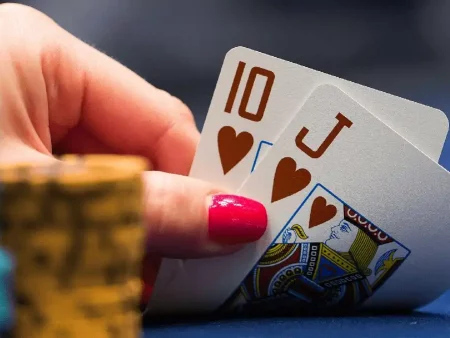Poker is not just a card game; it’s a strategic battle where success depends on your ability to read hands and make decisions based on the strength or weakness of your cards. For beginners, it’s essential to understand how poker hands are formed, which ones are the strongest, and how to use them to win.
The Basic Poker Hands
Each poker hand consists of the cards dealt to players at the beginning of the game, as well as the community cards revealed on the table. The strength of your hand depends on the combination of cards you have. Let’s go over the strongest combinations:
- Royal Flush — The strongest hand in poker. It consists of five consecutive cards of the same suit, from 10 to Ace (e.g., 10, J, Q, K, A of hearts). This combination is almost impossible to achieve, and when it does appear, it’s a jaw-dropper.
- Straight Flush — Five consecutive cards of the same suit. The only difference from a royal flush is that the cards do not have to be the highest possible rank.
- Four of a Kind — Four cards of the same rank (e.g., four 9s). This is a very strong hand, especially if the combination is hard to predict.
- Full House — A hand consisting of a pair and a three-of-a-kind. For example, a pair of kings and three eights.
- Flush — Five cards of the same suit, but not necessarily in a sequence. For example, 2, 5, 8, J, Q of hearts.
- Straight — Five consecutive cards of different suits. For example, 4, 5, 6, 7, 8 of mixed suits.
- Three of a Kind — Three cards of the same rank (e.g., three Aces).
- Two Pairs — A hand containing two pairs of cards of the same rank. For example, two queens and two sevens.
- One Pair — Two cards of the same rank, for instance, two tens.
- High Card — If none of the above combinations are made, your hand is defined by the highest card you have. For example, if your highest card is a king, that’s your hand.
How to Use Poker Hands
Understanding which hands are stronger helps in choosing the right strategy. But remember, even with the strongest hand, you can still lose if you don’t play your cards well. In poker, it’s not only about having a good hand but also about reading your opponents and making the right bets. Poker is not just about numbers; it’s also about psychology. Knowing poker hands allows you to create the right persona for your play and trick your opponents into playing according to your script. If you are playing poker for real money, it’s best to choose an online casino with an international license to ensure a fair and safe game.
Read also: How to use notes in poker.
Starting Hands in Poker
Starting hands play a crucial role in poker — these are the two cards you’re dealt at the beginning of the round. They dictate which strategy you should follow. Strong starting hands typically include pairs of the same rank, such as two queens, two kings, or two aces. Hands that have cards of the same suit, though not necessarily the same rank, also work well — for example, a Jack and Queen of spades.
Don’t forget that the strength of your starting hands depends on your position at the table. For example, a hand that is strong on the button (the last position) might not be as strong in the blinds (the first positions). Poker pros know that it’s not just about the cards; it’s about adapting to the situation.
Poker Analysis and Psychology
Being able to read your opponents is key to success in poker. Pay attention to their behavior: how much are they betting, how do they react to different situations? For example, large bets may indicate a strong hand, while frequent “checking” may signal weakness.
Your position at the table also matters. Players in later positions get more information about the actions of others before making their move. This gives them an advantage, allowing for more informed decisions. Body language is also important. You can guess a player’s mood — are they nervous, or do they seem confident? Such cues can help you understand what your opponent might be thinking.
Read also: Hand ranges in poker on preflop and postflop.
How to Improve Your Game
Reading hands and analyzing your opponents requires practice, but as you gain experience, you’ll start to understand what’s happening at the table. To improve your skills:
- Observe the players’ actions: How much do they bet, what kind of betting patterns do they follow?
- Watch their positions at the table: Who is in a more favorable situation?
- Notice their reactions: Are they anxious or overly confident?
- Develop ranges of hands: Instead of trying to guess your opponent’s exact cards, think about the possible combinations they could have.
- Learn from your mistakes and analyze what could be done better.
Poker is not just a game of cards; it’s a game of the mind. Knowing poker hands and how to use them properly helps you become a successful player, but learning how to read your opponents and devise strategies makes you even stronger. If you want to win, you need to not only analyze the cards but also the people at the table. And if you decide to play for money, choose a reputable online casino with an international license for a safe and fair experience. Not sure where to start in the world of gambling? Read the blog about gambling and casinos – game breakdowns, strategies, and winning secrets!
FAQ: Poker hands and their reading in online play
What are poker hands in online play?
Poker hands in online play follow the same ranking system as in traditional poker games. The strength of your hand determines your chances of winning the pot.
Hands are ranked from highest to lowest, with Royal Flush being the strongest and a High Card being the weakest.
What is the order of poker hand rankings?
The typical order of poker hands, from strongest to weakest, is as follows:
- Royal Flush: Ace, King, Queen, Jack, and 10, all of the same suit.
- Straight Flush: Five consecutive cards of the same suit.
- Four of a Kind: Four cards of the same rank.
- Full House: Three of a kind and a pair.
- Flush: Five cards of the same suit, not in sequence.
- Straight: Five consecutive cards of different suits.
- Three of a Kind: Three cards of the same rank.
- Two Pair: Two sets of pairs.
- One Pair: Two cards of the same rank.
- High Card: When no hand qualifies, the highest card plays.
How do you read poker hands in online play?
Reading poker hands in online play requires an understanding of the cards you hold, the community cards, and your opponents’ potential hands based on their betting behavior.
The process involves analyzing how likely your hand is to win, considering both your cards and the community cards on the table.
Can you read poker hands better in online play compared to live games?
Online play offers the advantage of quickly observing betting patterns and timing, which can give you additional insights into your opponents' hands.
However, online players miss the physical "tells" that can be observed in live games, such as body language or facial expressions.
What should I focus on when reading poker hands in online play?
When reading hands in online poker, focus on:
- Betting patterns (aggressive betting can indicate a strong hand).
- Player position (players in later positions might have stronger hands or more control).
- Time taken to act (players who take longer might be deciding between hands).
- Pot size (the bigger the pot, the stronger the hands usually are).
How can I improve my ability to read poker hands online?
To improve hand reading in online poker, practice analyzing opponents’ tendencies and betting patterns.
Also, study poker hand probabilities and the odds of completing certain hands to better predict what your opponents may be holding.
What is the importance of position when reading hands in poker?
Position is crucial in poker because it determines when you act in a betting round. Players who act later have more information, allowing them to make better decisions about their hand strength based on the actions of others.
Being in a later position can help you better "read" the actions and betting of your opponents.
How does the betting behavior influence hand reading?
Betting behavior gives vital clues about the strength of an opponent's hand.
- Aggressive betting may indicate a strong hand, or it could be a bluff.
- Passive betting may suggest a weaker hand or a player waiting for a better opportunity to bet.
Pay close attention to changes in betting patterns as the game progresses.
What is the role of community cards in online poker?
Community cards, or "board" cards, are shared by all players and are critical in determining the strength of your hand.
When reading poker hands, evaluate how the community cards complement your hole cards, and use them to assess your potential to make a winning hand.
What is a good strategy for reading hands in online poker?
A good strategy for reading hands in online poker involves being observant and calculating.
- Pay attention to your opponents’ actions.
- Be aware of your table position.
- Use hand probabilities and pot odds to assess the strength of your hand relative to the community cards and your opponents' actions.
With time, you'll develop a better sense of when you're likely to win or need to fold.






